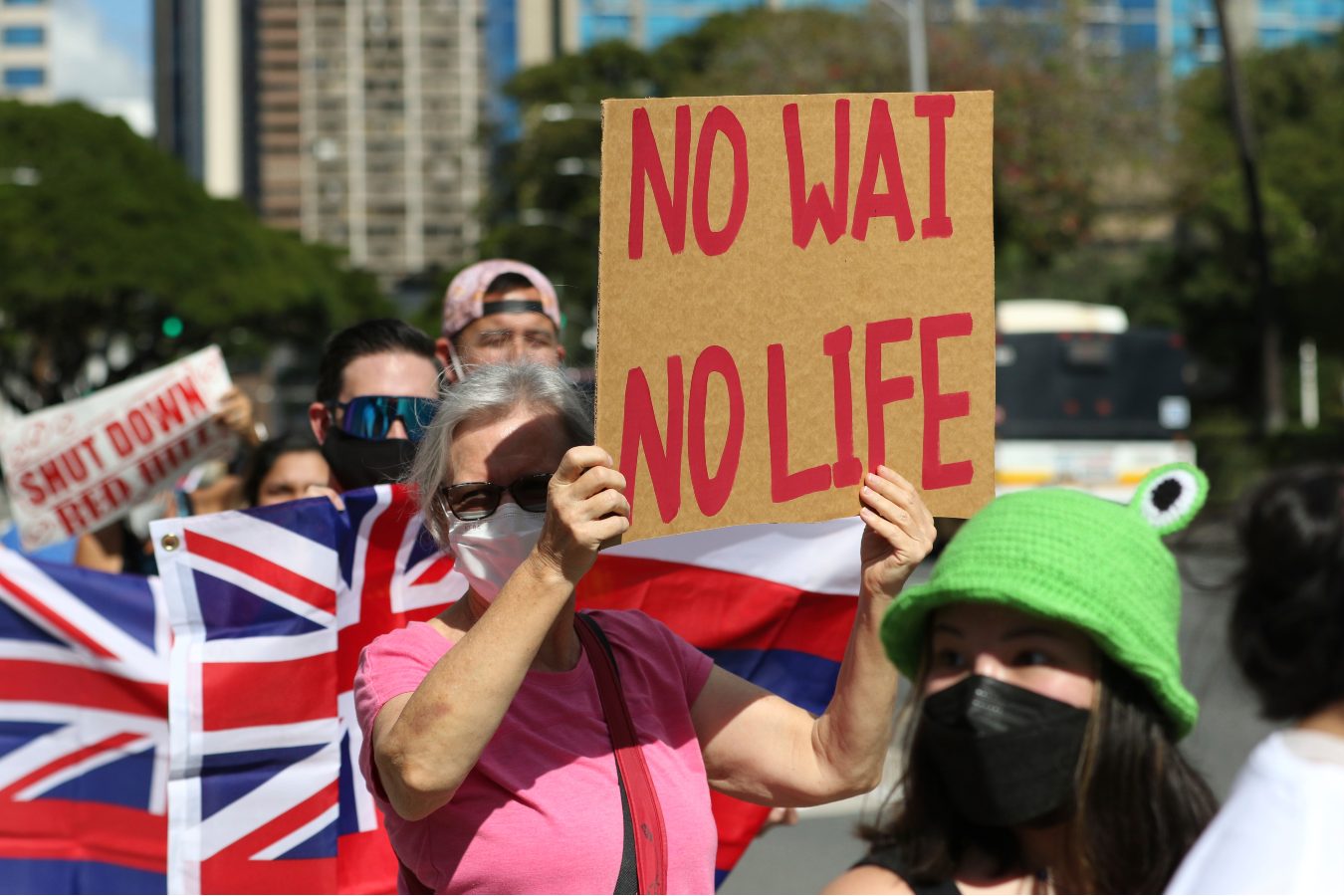The U.S. Navy confirmed last week that 1,000 gallons of raw sewage leaked into Pearl Harbor near Honolulu, just two days after Hawaii’s Health Department fined the Navy nearly $9 million for hundreds of safety violations at the military wastewater treatment plant.
At issue are not only the underground aquifers that supply drinking water for much of the island of Oahu, but also answerability by the military that has long had a contentious presence in Hawaii.
“I think it’s incredibly important that there is accountability and that accountability begins with the Navy assuming responsibility for the actions and the situations they’ve created,” said Trisha Kehaulani Watson, the vice president of ‘Āina Momona, a Hawaiian social and environmental justice organization.
The wastewater leak and the fine are just the latest in a series of water crises on Oahu that have been attributed to the U.S. military presence in Hawaii.
Last November, hundreds of members of the military and their families living on a joint operations base near Honolulu were sickened after a Navy-run underground fuel storage facility leaked petroleum into the source of their drinking water. After the incident was made public, Hawaii’s health department issued an emergency order requiring the Navy to immediately stop its operations at Red Hill Bulk Fuel Storage, the fuel storage facility. On November 28, the Navy shut down the well at Red Hill that provided base members with water.
On Oahu, aquifers are often in such close proximity to military installations that any contamination from a leak poses a public health risk to hundreds of thousands of residents. In a January hearing into the Red Hill incident, Hawaii’s Board of Water Supply found that the Navy’s fuel storage facility posed “an imminent peril to human health and the environment, that it places Oahu’s sole-source aquifer at significant risk of further contamination, and that immediate action is necessary to protect our critical drinking water resources.”
In February, residents of Kailua Bay, north of Honolulu, were advised to avoid the namesake waters after a leak from a US Marine Corps wastewater treatment facility released water contaminated with unsafe levels of fecal bacteria into the bay. In March, the Defense Department announced that it would permanently close and defuel the Red Hill facility.
During a visit to Hawaii last weekend, Lloyd Austin, the US Secretary of Defense, toured the Red Hill facility and reiterated in a tweet that its permanent closure was “the right thing to do.” But Austin’s visit was criticized by some local military families as well as representatives from O‘ahu Water Protectors, a local environmental justice organization, who argued that they have not been included in a federal task force on the safe defueling of the Red Hill facility.
The Red Hill incident galvanized a broader cross-section of Hawaiians who in the past had not always seen eye-to-eye on environmental issues, according to activists. “I think the fact that you now have an alliance between local people and environmentalists and native Hawaiians and military families, that’s been a monumental shift,” said Kehaulani Watson of ‘Āina Momona.
“Red Hill immediately connected people to the issue in a way through our shared sense of vulnerability,” said Kyle Kajihiro, a lecturer and Native Hawaiian rights activist at the University of Hawaiʻi at Mānoa. Kajihiro believes that the level of attention by locals towards the recent wastewater leaks into Pearl Harbor, itself a source of strong emotional ties, was strengthened by the impact of Red Hill. “I think it helped to wake up a latent understanding of the military’s environmental and social impacts that often get pushed to the back because people have other things on their mind,” he said.



